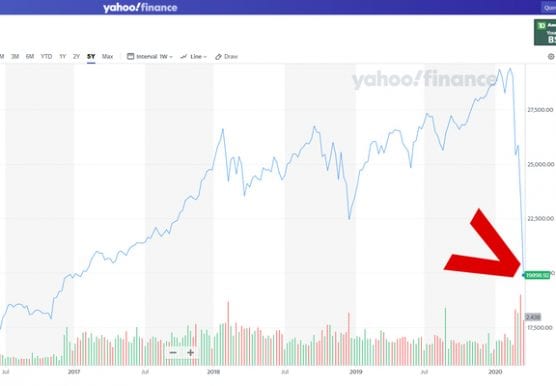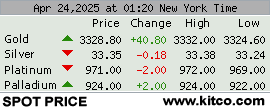The so-called “Trump Bump” is another casualty of the COVID-19 pandemic, as virtually any gains in the stock market since President Trump took office vanished Wednesday as markets slumped dramatically.
The Dow Jones Industrial Average — which stood at 19,827 points when the president took office on Jan. 20, 2017 — closed this afternoon at 19,903, points.
The damage began early. At opening bell, the Dow immediately fell more than 1,200 points, at one point falling more than 2,300 points, with circuit breakers temporarily halting trading. The Dow settled at about a 6.2% loss on the day.
The S&P 500 and Nasdaq — the former of which dropped 9% in early afternoon trading, triggering its own “limit-down” halt — also took big losses, settling at 5% and 4% decreases, respectively.
President Trump has now presided over a historic loss in value in an extremely short period, though he continues to insist that the U.S. economy will come back stronger than ever once the COVID-19 pandemic subsides.
“I think there’s tremendous pent-up demand both in terms of the stock market and in terms of the economy,” the president said earlier this week.
Meanwhile, a second stimulus package is nearing completion, based on a version passed by the House last week.
Treasury Secretary Stephen Mnuchin, who has been working nonstop with the Senate to pass the package, reportedly told lawmakers unemployment could spike to a Depression-level 20% without a government bailout.
“In different times we’ll fix the deficit, this is not the time to worry about it,” Mnuchin said on Capitol Hill. “This is the time where hard-working Americans are impacted by government decisions, [and] that’s when the government has to step up.”
The stimulus package is said to include paid sick leave and medical leave for affected workers. The president has asked for $250 billion to be used as direct payments to American taxpayers.
A payroll tax holiday — something the president has pushed for strongly — seems to be on the back burner, Mnuchin has indicated, with immediate payments to workers more likely.
With the Senate poised to pass the House-approved package, there is already talk of a third stimulus package that could include the $50 billion sought by the airline industry and at least $250 billion in direct payments to American taxpayers.
News of the stimulus helped markets climb back up Tuesday, with the Dow Jones finishing 5% up for the day and the S&P and Nasdaq closing a point higher.
The markets, significantly down from a month ago, have had a rocky two weeks, sending volatility indexes flying and hitting several benchmarks along the way.
On March 11, the longest bull market in U.S. history ended, with massive sell-offs among investors.
After the president announced a national emergency on March 13, markets rallied and recorded the largest one-day percentage increase since October 2008.
The Dow also twice set a new record for the worst day since 1987’s Black Monday crash: on March 12, after the New York Federal Reserve promised $1.5 trillion in short-term lending; and again on Monday, after a somber President Trump said the virus could last through August.
The president has grown progressively more serious about the coronavirus. Earlier in the year Trump said the hysteria over the virus was a “hoax” and another attempted to essentially impeach him, then later claimed it was “under control.”
On Tuesday, however, he said he always thought coronavirus was a pandemic. The president has repeatedly used the language of war in his press briefings with his White House task force and refuses to back down on his habit of referring to COVID-19 as a “Chinese virus.”
Public reception of Trump’s coronavirus response has been poor. More than half of roughly 9,000 U.S. adults surveyed said Trump has failed to appreciate the seriousness of the virus, according to a Wednesday report from the Pew Research Center.
The new strain of coronavirus has now affected more than 214,000 worldwide and about 7,300 confirmed throughout the entire United States, according to data compiled by Johns Hopkins University.
An estimated 8,700 — with now more than 120 deaths in the United States — have died globally from the virus, data show.
— By Nick Rummell
Like this:
Like Loading...
Related





 Tweet This
Tweet This Facebook
Facebook Digg This
Digg This Bookmark
Bookmark Stumble
Stumble RSS
RSS




























REAL NAMES ONLY: All posters must use their real individual or business name. This applies equally to Twitter account holders who use a nickname.
0 Comments
You can be the first one to leave a comment.